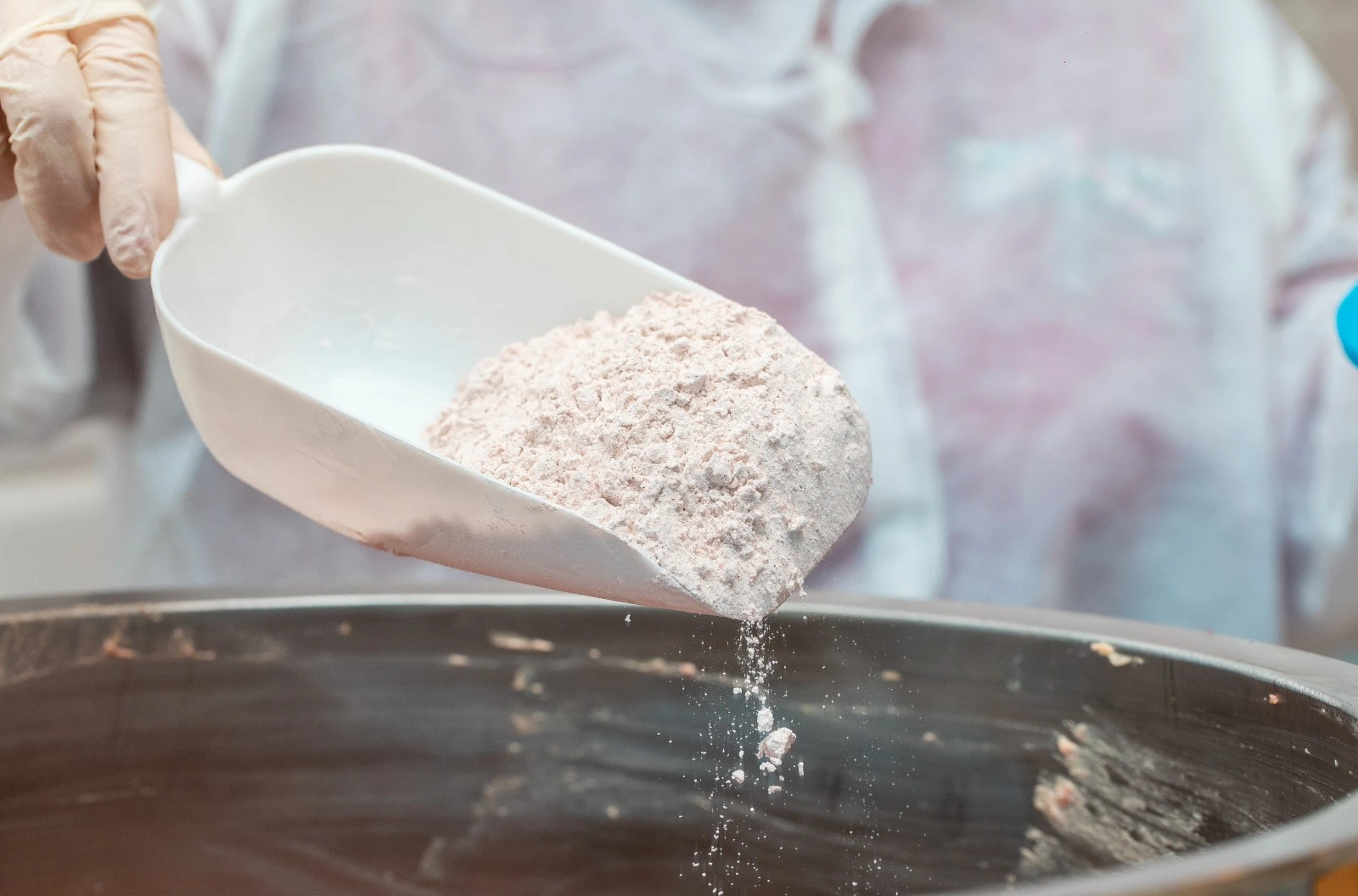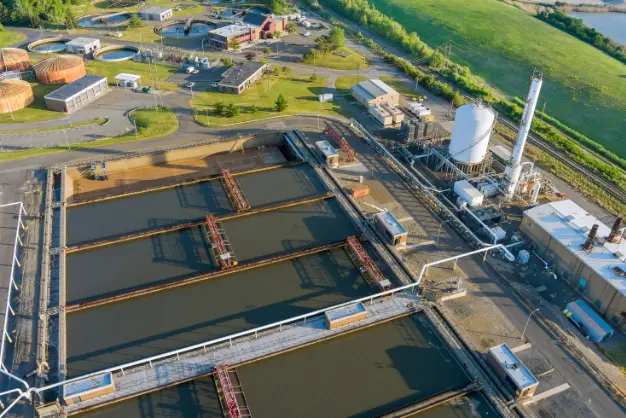TABLE OF CONTENTS
TABLE OF CONTENTS
Fumed silica, a pivotal material in countless industries, is crafted through a process known as flame hydrolysis. This blog delves into “How is fumed silica made,” highlighting the intricate steps from silicon tetrachloride to the versatile, ultrafine powder used to improve products from cosmetics to coatings. Discover the science behind its manufacture and its broad applications, underscoring fumed silica’s essential role in modern material science.
How Is Fumed Silica Made
The production of fumed silica is a fascinating example of chemical engineering, transforming simple ingredients into a material with extraordinary properties. This process, known as flame hydrolysis, involves several key steps, each critical to achieving the final product’s unique characteristics.
Starting with Silicon Tetrachloride
The journey begins with silicon tetrachloride (SiCl₄), a colorless liquid derived from silicon. This compound serves as the precursor for fumed silica. In its pure form, silicon tetrachloride is relatively unremarkable, but when subjected to the right conditions, it transforms into something much more versatile.
The Flame Hydrolysis Process
At the heart of fumed silica production is flame hydrolysis. This process involves burning silicon tetrachloride in a hydrogen and oxygen flame at temperatures exceeding 1,000°C (1,832°F). The intense heat breaks the silicon tetrachloride molecules into silicon and chlorine atoms. Simultaneously, the silicon atoms react with oxygen from the flame, forming silicon dioxide (SiO₂), which is the primary component of fumed silica.
Formation of Ultrafine Particles
As the silicon dioxide forms, it rapidly cools and condenses into tiny droplets. These droplets then agglomerate into chains or branched structures, resulting in an amorphous, non-crystalline form of silica. The rapid cooling process is crucial; it prevents the formation of crystalline structures, ensuring the silica remains in its fumed, amorphous state.
Achieving Desired Properties
The specific conditions under which flame hydrolysis occurs, such as the temperature of the flame and the rate of cooling, can be adjusted to control the properties of the fumed silica produced. Factors like particle size, surface area, and degree of aggregation can all be tailored to meet different requirements, making fumed silica a highly versatile material suitable for various applications.
Final Product
The resulting fumed silica is a fine, white powder characterized by its enormous surface area and ability to act as a thickening agent, reinforcing filler, and anti-caking agent. Its production is a testament to the power of chemical engineering to create materials that significantly enhance the performance of products across a wide range of industries.
In summary, the making of fumed silica is a complex process that turns simple chemical ingredients into a multifunctional product. Through the precise application of flame hydrolysis, manufacturers can produce fumed silica with specific properties tailored to diverse industrial applications, from enhancing the viscosity of paints and coatings to stabilizing food products.
How to make fumed silica
Given the complexities and the industrial scale of the processes involved in producing fumed silica, it’s not feasible or safe to replicate them outside of professional manufacturing environments. The creation of fumed silica requires precise control over extremely high temperatures, the handling of hazardous chemicals, and specialized equipment, all of which are beyond the scope of DIY projects or laboratory-scale synthesis outside of industrial settings.
Understanding the Limitations
Safety Concerns: The primary ingredient, silicon tetrachloride, is a corrosive and toxic chemical that poses significant health risks if not handled with proper safety equipment and protocols. The high temperatures necessary for the flame hydrolysis process further complicate safe handling, requiring protective measures well beyond standard laboratory safety equipment.
Specialized Equipment: Producing fumed silica involves flame hydrolysis, a process that burns silicon tetrachloride in a hydrogen and oxygen flame. This reaction requires a reactor capable of safely managing the reaction’s extreme temperatures and containing the resultant silica smoke without environmental release.
Technical Expertise: Beyond safety and equipment, the production of fumed silica demands in-depth chemical knowledge and expertise. Adjusting the process parameters to control the properties of the final product, such as particle size and surface area, requires a sophisticated understanding of the underlying chemistry and physics.
Responsible Manufacturing
The manufacture of fumed silica is best left to professional settings where environmental, health, and safety regulations guide all aspects of production. These settings ensure that the process is not only safe for the workers involved but also minimizes the environmental impact. Modern manufacturing plants are equipped with the necessary controls to capture emissions and manage waste products responsibly.
While the science behind making fumed silica might be intriguing, replicating this process outside of an industrial setting is neither safe nor practical. For those interested in the material, it’s advisable to source fumed silica from reputable suppliers who adhere to the highest standards of production quality and safety. This approach ensures access to high-quality material while upholding safety and environmental stewardship.
Conclusion
Fumed silica exemplifies the marvels of chemical engineering, transforming simple ingredients into a multifaceted material crucial across numerous industries. Its production, rooted in the complex process of flame hydrolysis, underscores the necessity of professional expertise and safety precautions. This material enhances the functionality and performance of products ranging from cosmetics to industrial composites. As we appreciate fumed silica’s broad applications, it’s imperative to recognize the sophisticated manufacturing processes behind it, highlighting the importance of responsible and professional production to harness its benefits safely and sustainably.
FAQs
Lorem ipsum dolor sit amet, consectetur adipiscing elit. Ut elit tellus, luctus nec ullamcorper mattis, pulvinar dapibus leo.
Fumed silica is a fine, amorphous form of silica produced by a process called flame hydrolysis. It’s known for its large surface area and is used as a thickener, filler, and desiccant in various industries.
Fumed silica is made through flame hydrolysis, where silicon tetrachloride is burned in a hydrogen and oxygen flame at high temperatures. This reaction produces silicon dioxide particles that form fumed silica.
Flame hydrolysis is used because it allows for the controlled production of ultrafine silica particles with a high degree of purity and specific surface properties. This method is essential for achieving the unique characteristics of fumed silica.
No, producing fumed silica involves handling hazardous materials and requires extremely high temperatures, making it unsafe and impractical outside of professional manufacturing environments.
Safety considerations include handling silicon tetrachloride with care due to its toxic and corrosive nature, managing high-temperature reactions safely, and ensuring proper ventilation to avoid inhalation of fine silica particles.
Fumed silica itself is an inert material with low environmental impact when handled correctly. Manufacturers follow regulations to minimize emissions and waste during production, aiming for environmentally responsible practices.
Contact Us
Questions or looking for a quote?





